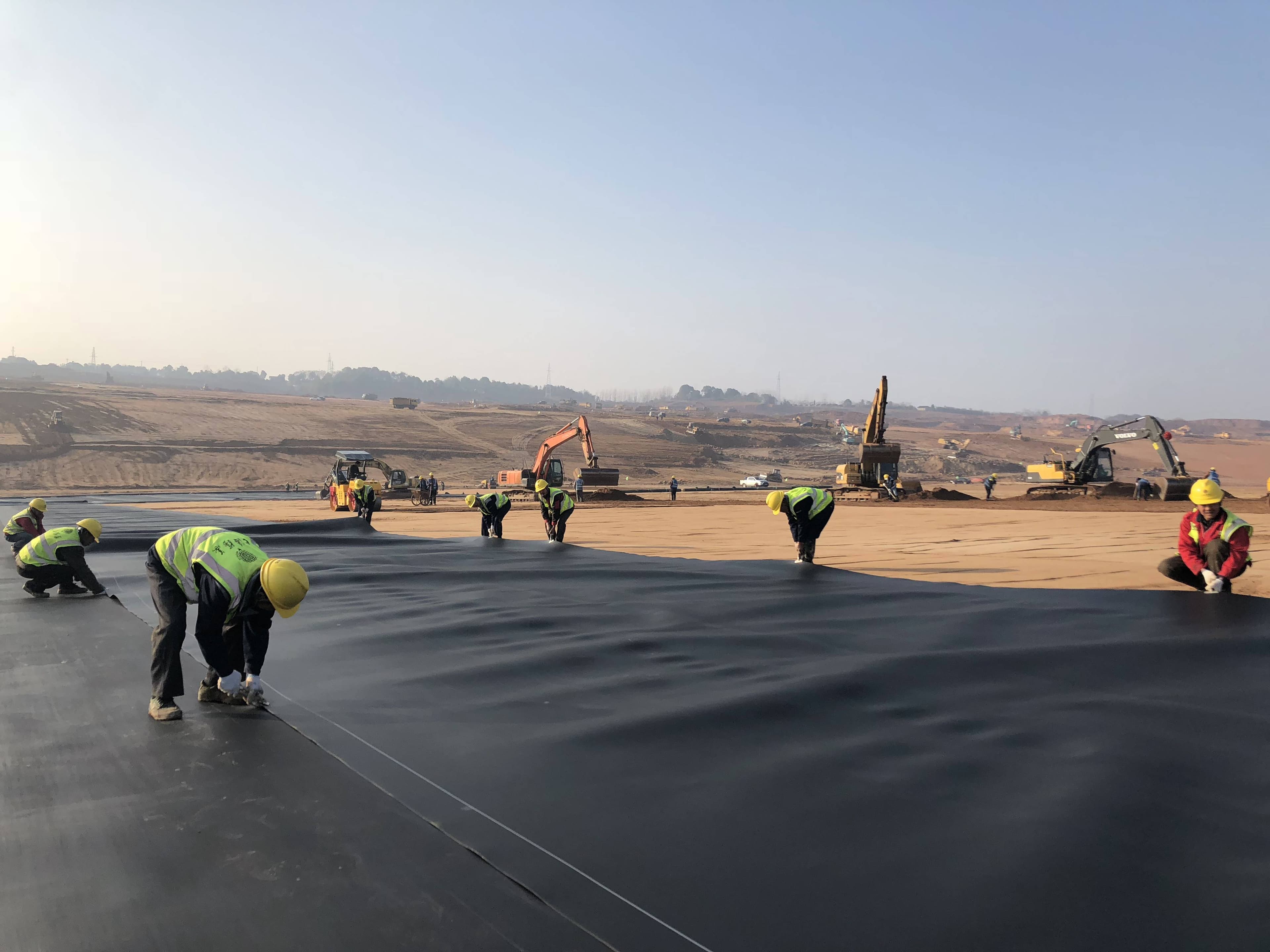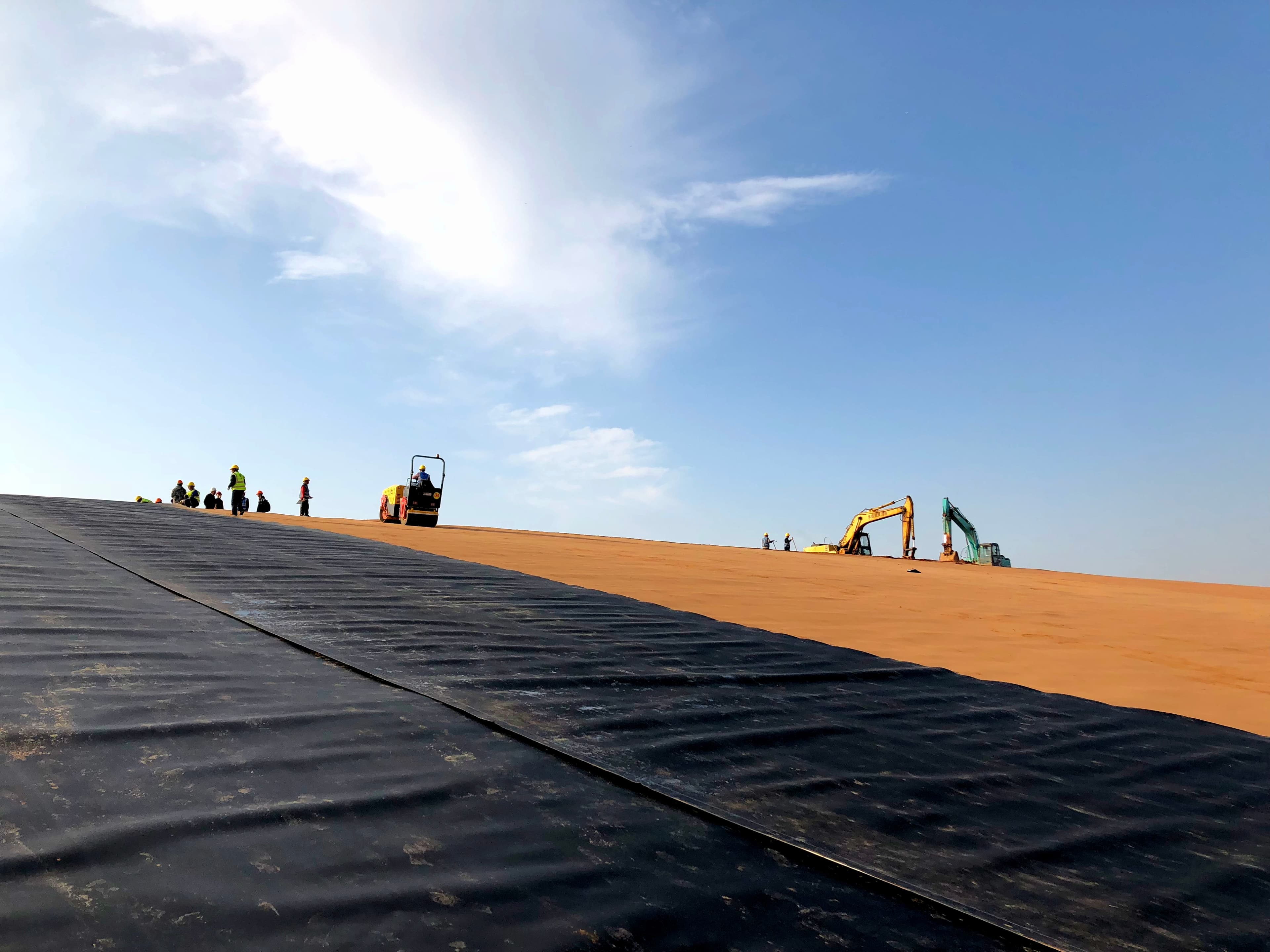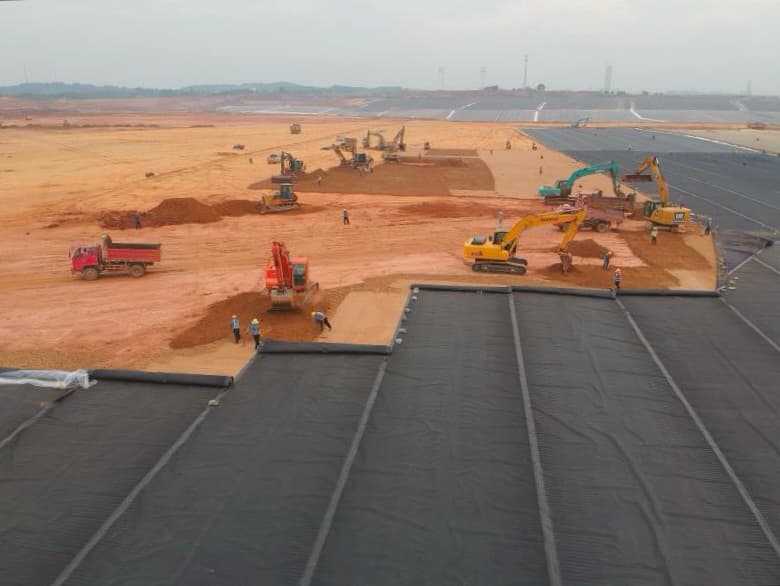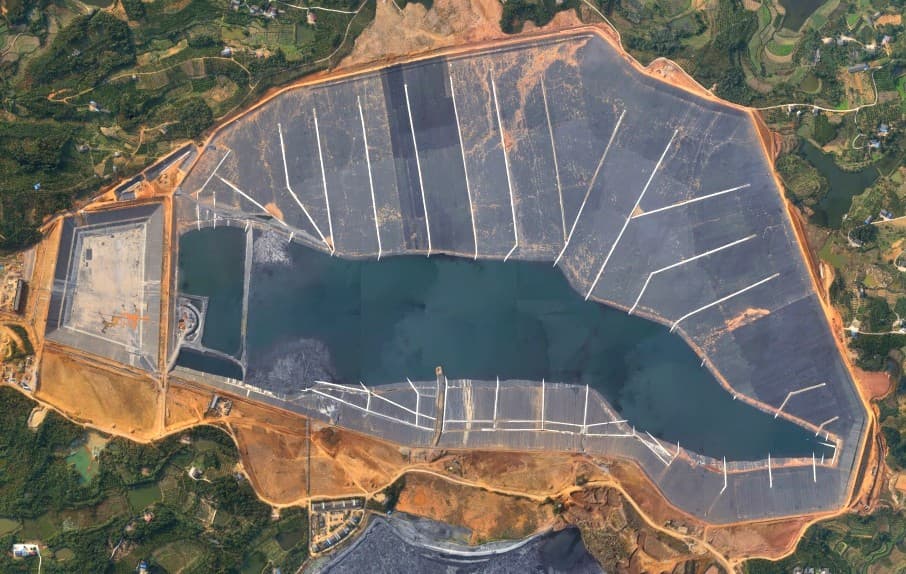
Geomembranes protecting the environment at a stack pond in China
Overview
Phosphate mining is an important economic activity in the inland Chinese province of Hubei, which boasts large reserves of valuable phosphates. The process of phosphate mining ─ for the manufacture of industrial fertilizer ─ involves the generation of large amounts of phosphogypsum. The leachate from phosphogypsum stack contains phosphate, ammonia nitrogen and fluoride.If leaked to soil and groundwater, it can cause huge disasters and losses to industrial and agricultural production and downstream people's livelihoods and property. The safe stacking and storage of this industrial solid waste by-product is critical to the environmental integrity of the surrounding location.
Near Shibaoshan village – in the Yaojiagang chemical industry park in Zhijiang City of southern Hubei Province – the project owner Hubei Sanning Chemical Co., Ltd. needed to develop a new stack pond to store its phosphogypsum waste to the highest possible environmental standards. In partnership with environmental protection engineering contractor, Shanghai Shengyi Environmental Technology Ltd.,Solmax was selected to supply high-grade, 1.5 mm GSE HD geomembrane lining to cover a total waste containment area of almost 1.6 million m2 (17.2 million f2). Construction of the new stack pond commenced in May 2019 and was completed on schedule in January 2021.
The project was a key priority for the local government in the region, given its importance to the local economy and its sustainable development.
Challenge
A phosphogypsum stack of this scale ─ one of the largest in China ─ is a significant potential hazard. If it were to fail, enormous losses to industrial and agricultural production, and people's livelihoods, could result. Constructing the new stack to the highest environmental standards was therefore crucial to the project’s overall success.
The construction period was tight, and the installation of Solmax geomembrane materials mainly took place during the local rainy season. A key short-term challenge for us was to produce more than 1.5 million m3 of GSE HD geomembrane (1.5 mm smooth and 1.5 mm double-side spray-on textured) in its Thailand plant, transport it to Shanghai port by sea, and then deliver it by road to the project site more than 1,000 km away.
Solution
GSE® HD geomembrane and polymer-enhanced clay TSP of Shanghai Shengyi were used to form a composite impervious layer in the phosphogypsum stack pond and regulating backwater pond. These were manufactured in line with new specifications issued by the local Ministry of Ecology and the Environment, to effectively contain leachate and prevent groundwater pollution.
The project adopted a series of internationally leading environmental protection materials and technology, specifically Solmax high-quality HDPE geomembrane and polymer-enhanced clay (TSP) of Shanghai Shengyi.
After the new stack pond was put into use, Shanghai Shengyi commenced work on the safe storage of phosphogypsum in the old pond and gradually completed its ecological restoration. This restoration included the use of ultra long-distance horizontal directional drainage technology, deep-buried vertical gas-driven technology, an ACL artificial barrier liner, ecological-solidification liner, and other materials.
The Solmax project team was made up of highly experienced professionals from our Sales, Customer Service, Production and Technical teams, working together closely to formulate a supply plan and allocate production according to capacity, with strict product quality control, logistics management, and technical support.
Completion of the project saw the construction achieve two domestic firsts in China: the first phosphogypsum stack pond that has implemented the new national standard GB18599-2020, and the largest regulating backwater pond in the country, with an effective volume of 1 million m3.

SANNING SHIBAOSHAN PHOSPHOGYPSUM STACK POND, CHINA

SANNING SHIBAOSHAN PHOSPHOGYPSUM STACK POND, CHINA

SANNING SHIBAOSHAN PHOSPHOGYPSUM STACK POND, CHINA

SANNING SHIBAOSHAN PHOSPHOGYPSUM STACK POND, CHINA
Explore more case studies
View allBiogas cover turns palm oil waste into fuel in Malaysia
Cenergi transforms POME into renewable biogas in Malaysia, using GSE geomembranes. This project reduced GHG and the approach highlights innovation in waste recycling and contribution to renewable energy goals.
Meeting stringent CCR regulations with BENTOLINER
Xcel Energy successfully closed Sherco Pond No.1 and constructed Sherco Pond No.2 using BENTOLINER® to meet stringent CCR regulations, ensuring minimal environmental impact and continuous service.
IMAX parking lot's innovative stormwater system with MIRAFI
In 2012, Mississauga's IMAX parking lot implemented a low impact development system to manage stormwater, enhancing water quality and maintaining pavement integrity.